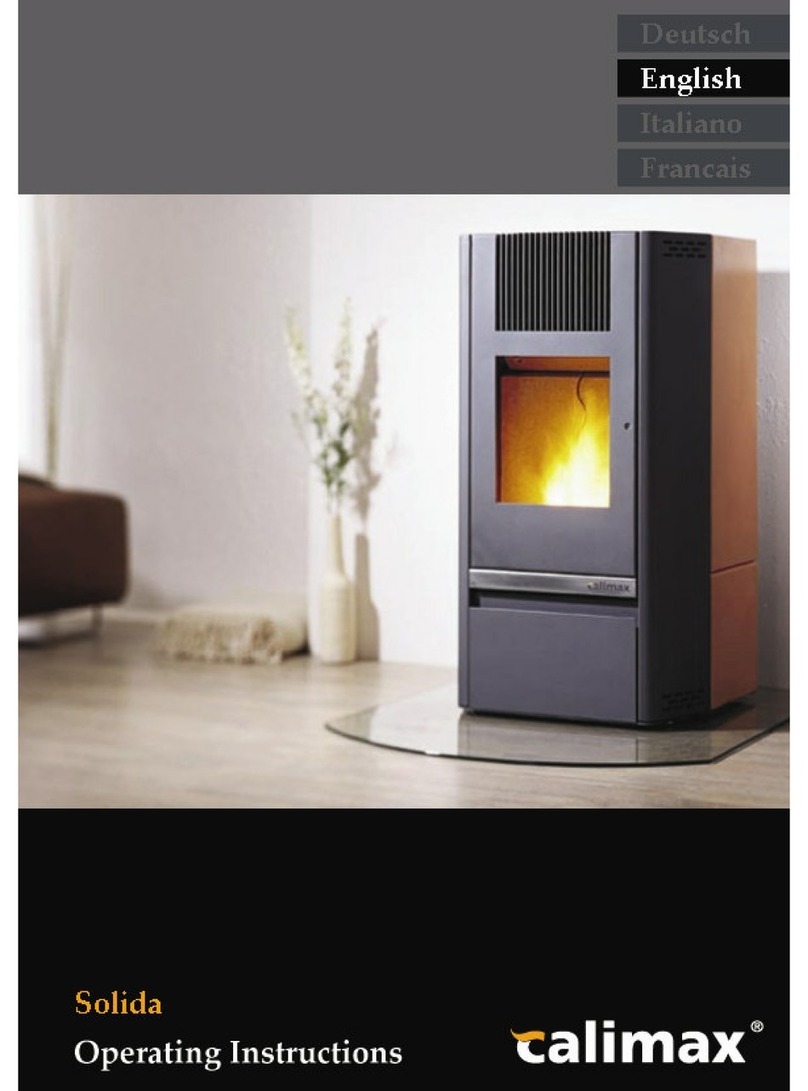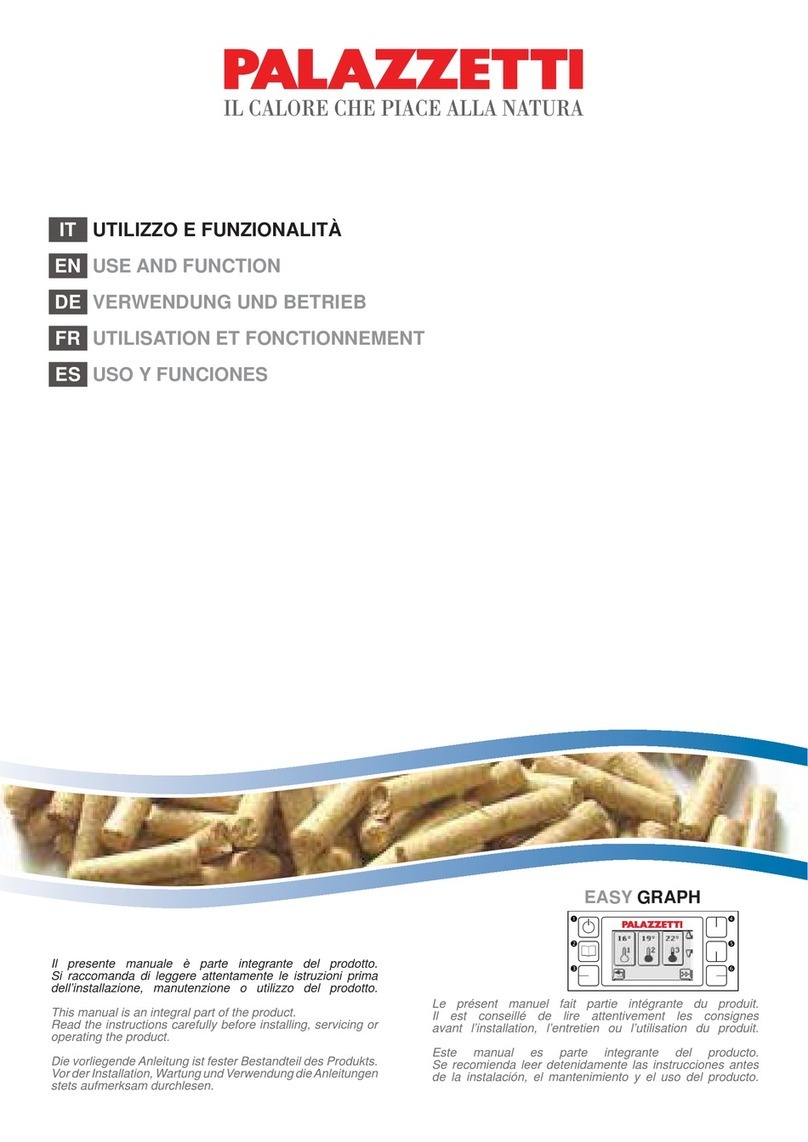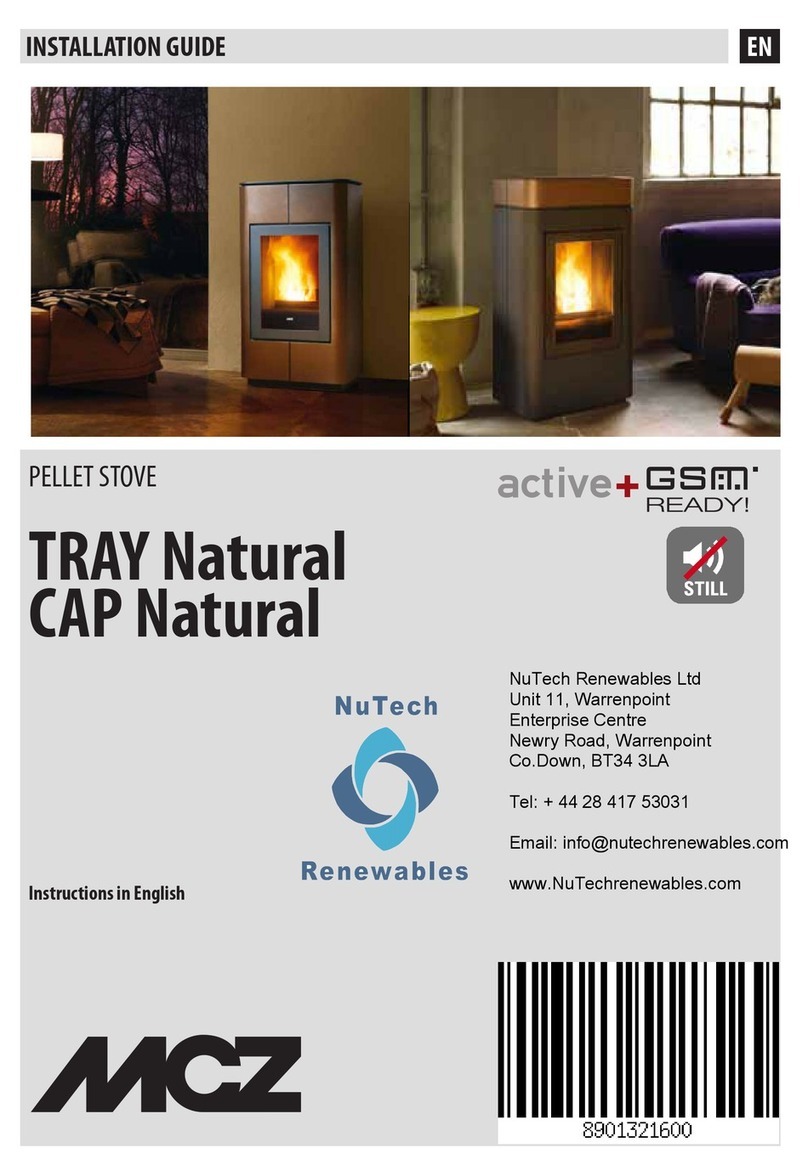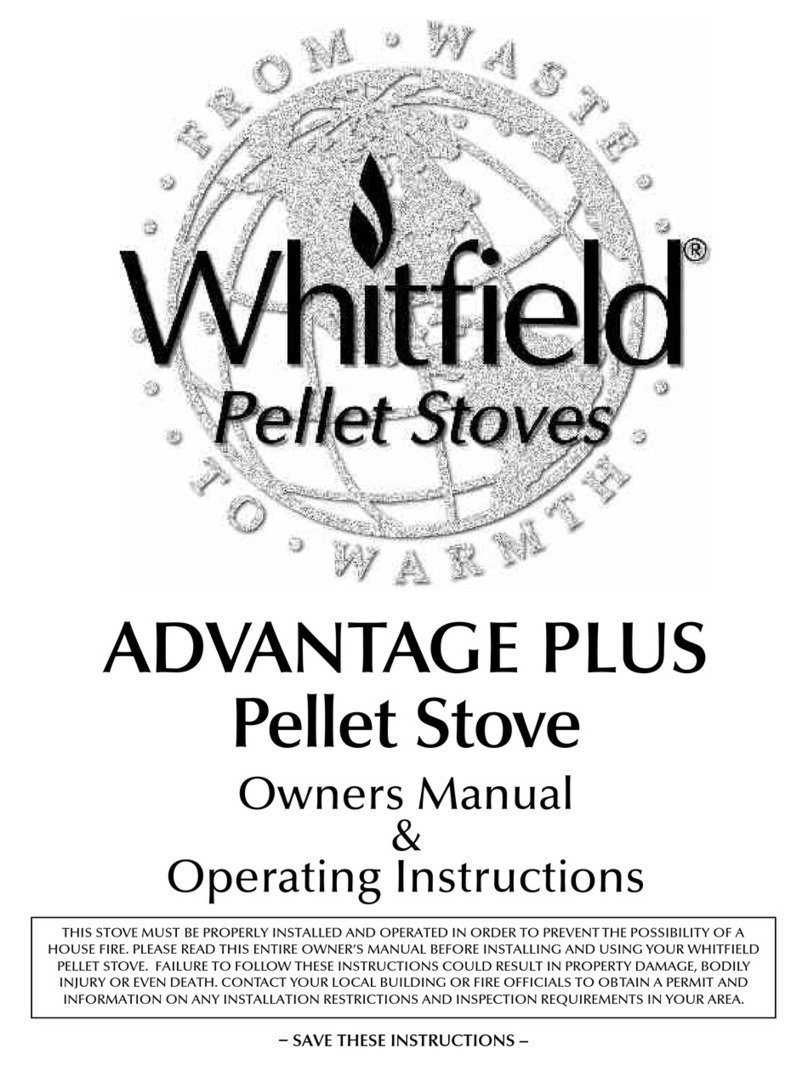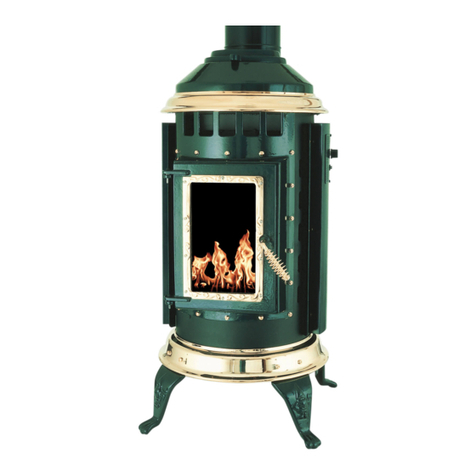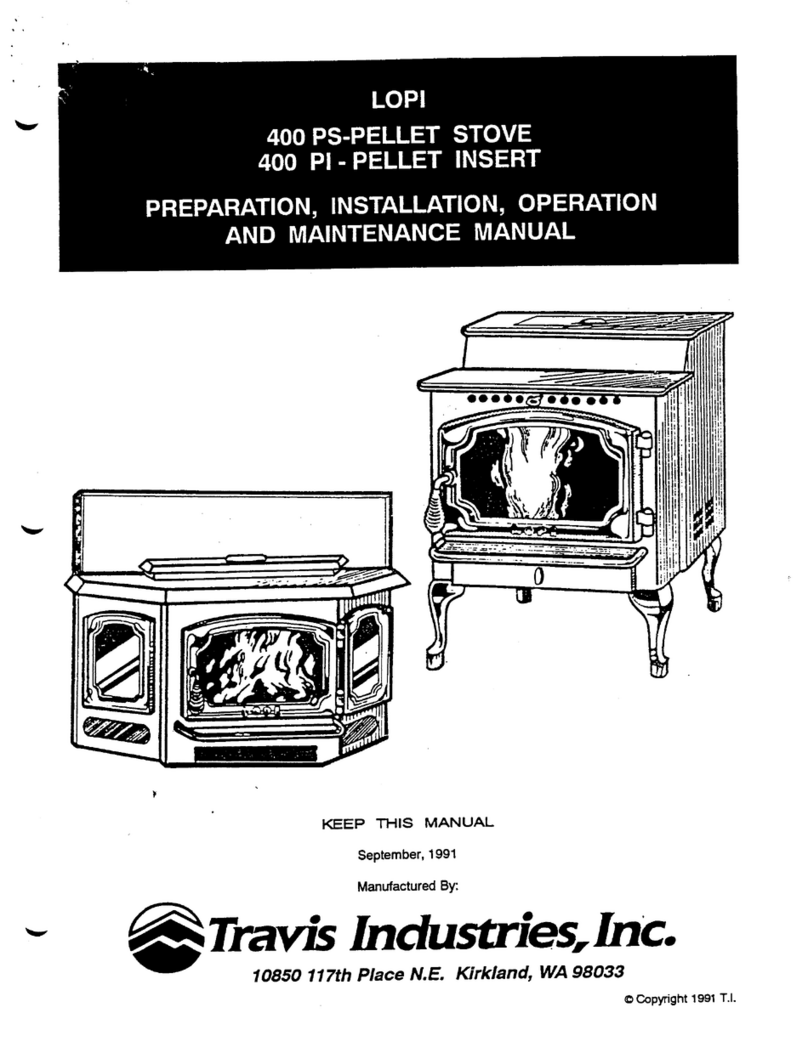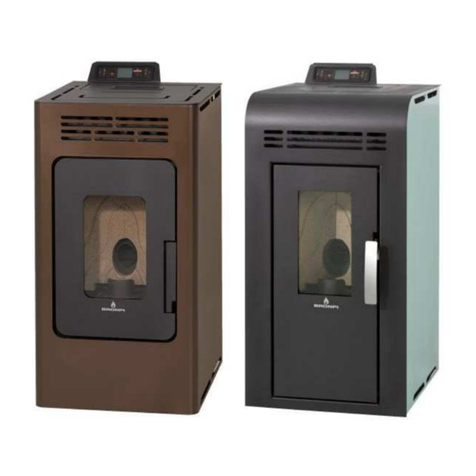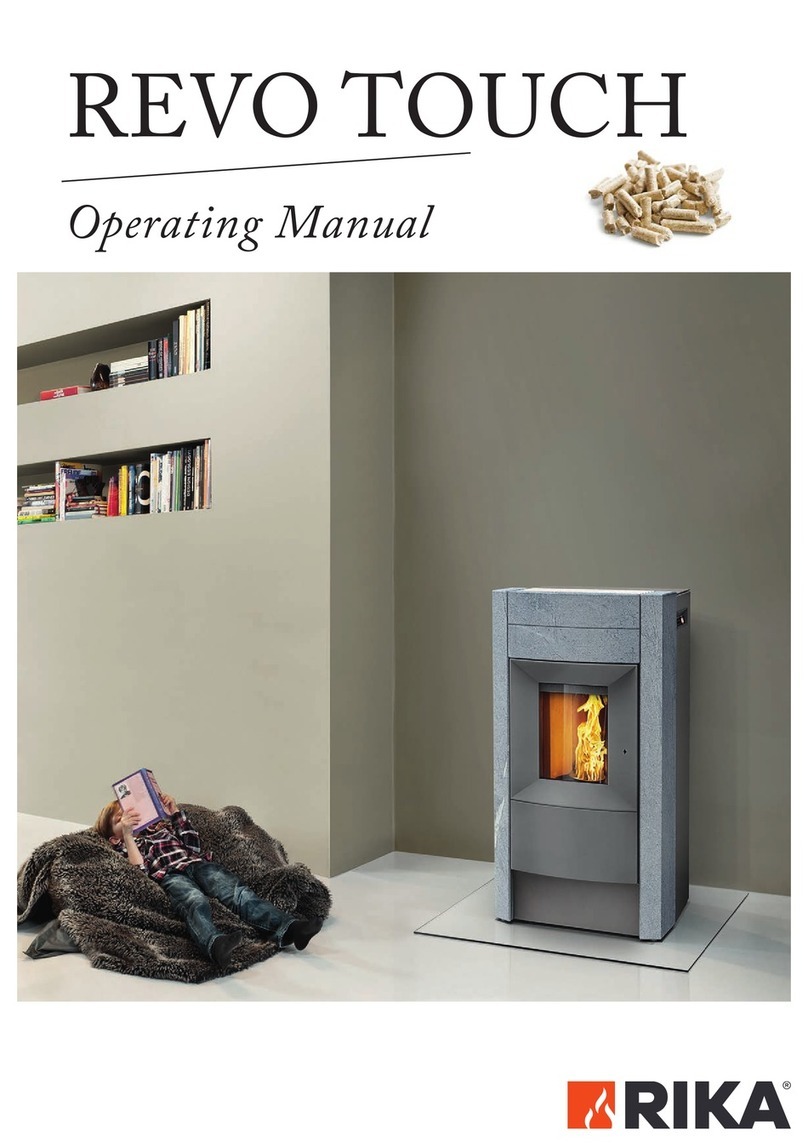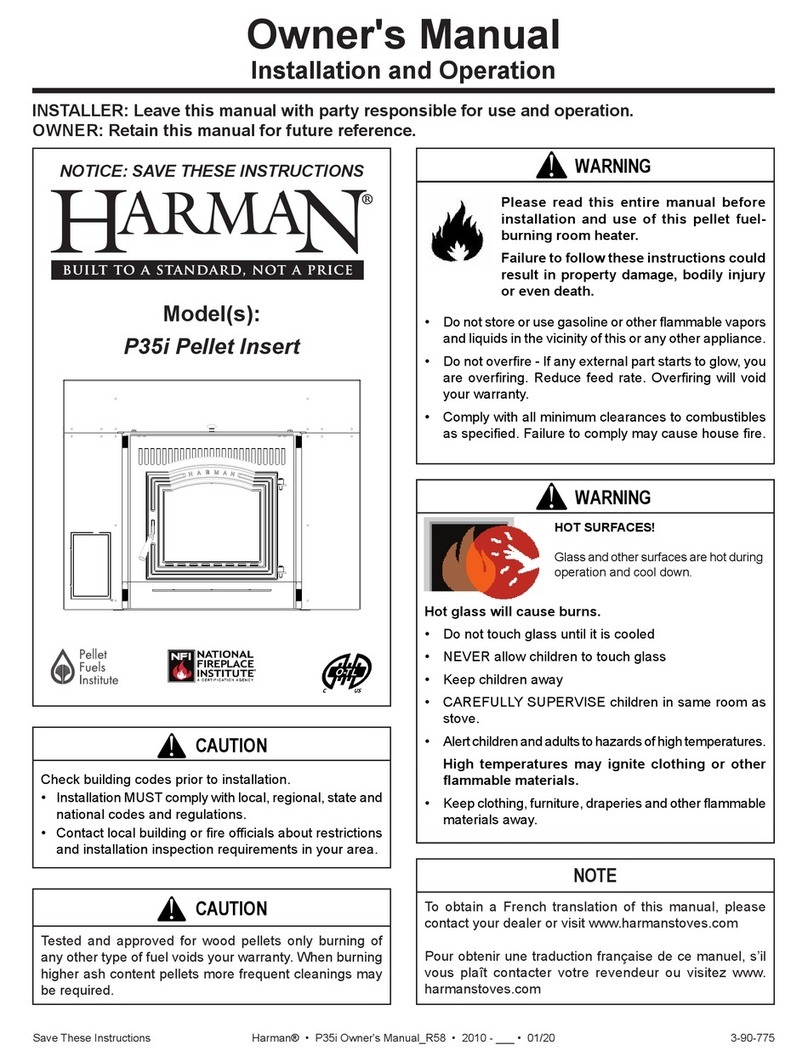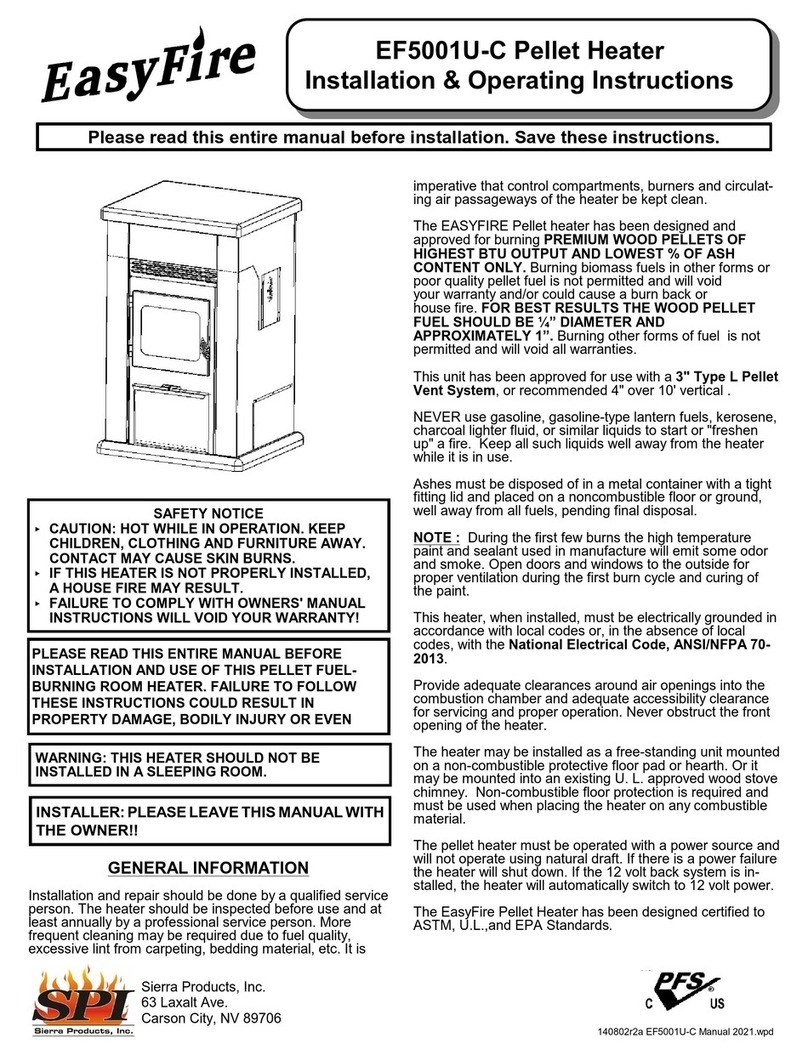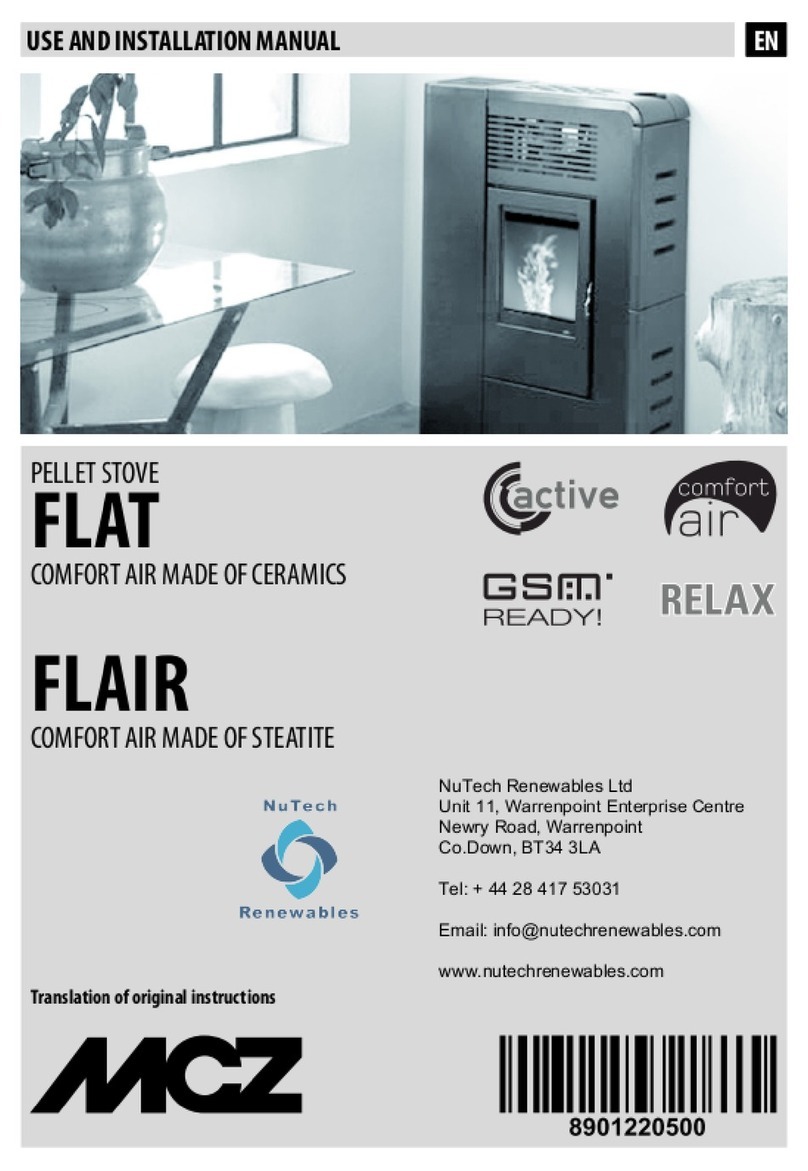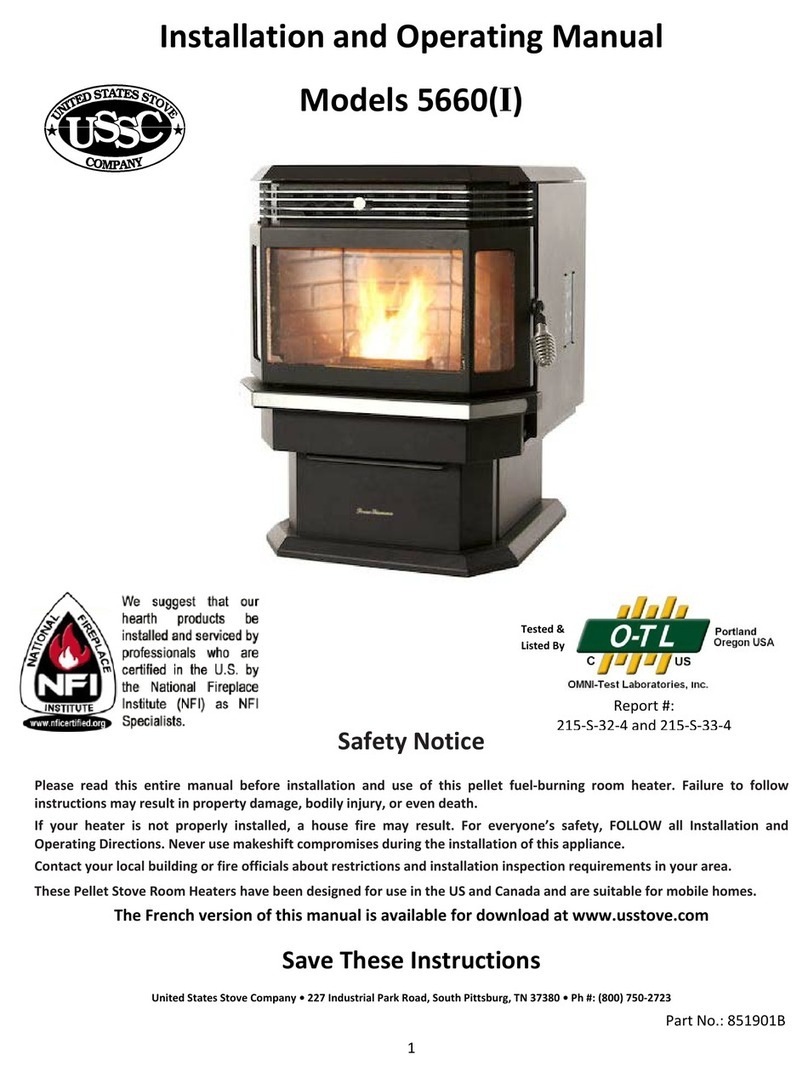
PRODUCT MANUAL
Version 1.4
PELLET BOILER STOVE – AMANDA Diva 16,1 kW
Page
5.5: STOVE INSTALLATION SITE
The paragraph 2.4: Safety distances shows the minimum
clearances from combustible materials and objects that
must be observed when positioning the stove.
Protect all structures that may catch fire if exposed to
excessive heat.
Floors made from flammable materials such as: wood,
parquet, linoleum, laminates or carpets must be
protected by a suitably-sized fireproof base underneath
stove. Such base may be made from steel, slate, glass or
stone and must cover the floor in the part underneath
the stove and the flue attachment, and must extend at
least 50 cm at the front.
The manufacturer declines all liability for any alterations
to the characteristics of the material making up the floor
underneath the protective base.
Any elements made from wood (e.g. beams) or other
combustible material located near the stove should be
protected with fireproof material.
Flammable walls or elements must be kept at least 150 cm
away from the stove.
Leave enough clearance for maintenance work.
Note
If connecting to multiple connection chimneys additional
safety equipment is required. Your local chimney sweep
will advise you in this case.
Note
Be sure to prevent condensed water from entering via the
flue connection. You may need to have a condensate ring
installed - ask your chimney sweeping expert for more
information. Damages caused by condensate are excluded
from manufacturer’s warranty.
5.6: FEEDING IN EXTERNAL COMBUSTION AIR
•Combustion air must be fed to the stove from
outside via a sealed pipe for operation independent
of the room air, it must be possible to shut off the
combustion air pipe.
•The open/closed setting must be clearly
recognizable.
•Connect a pipe Ø54mm at the air intake and fix it
with a hose clamp (not included). For configurations
with pipes over 4m, use Ø100mm pipes.
•To ensure enough air intake, the intake pipe should
not exceed max. 1m and have max. 3 bends.
•In extreme cold pay attention to icing on the air
intake opening (check).
•It is also possible to suction in combustion air directly
from another sufficiently vented room (e.g. cellar).
•The combustion air pipe must be tightly connected
permanently to the air nozzles of the stove.
•If you do not use the stove for a long time, please
close the combustion air intake to prevent the stove
from moisture.
If one or more of these conditions does NOT apply, the
result is poor combustion in the stove and negative
pressure in the installation room.
5.7: FLUE GAS EXHAUST
The stove operates with negative pressure in the
combustion chamber, and consequently the flue gas
discharge must be airtight.
The stove must be connected to its own separate flue gas
exhaust system capable of ensuring adequate atmospheric
dispersion of the combustion byproducts.
The components making up the flue gas exhaust system
must be suitable for the specific operating conditions and
bear the CE mark.
Note
An initial vertical section measuring a minimum of 1.5
meters is required to ensure correct flue gas exhaust.
Note
It is necessary to connect a pipe at the bottom of the “T”
junction in order to discharge the smoke condensate that
could form in the flue gas exhaust (see 2.6) The correct
chimney connection).
Anchor the flue pipes to the wall using special collars.
The flue gas exhaust attachment MUST NOT BE connected
to:
•A chimney used by other heat generators
(boilers, stoves, fireplaces, etc.)
•Air exhaust systems (range hoods, vents, etc.)
Chimney pipe dampers should be easily accessible.
5.8: DISCHARGED THROUGH ROOF USING A
TRADITIONAL CHIMNEY
The chimney used to discharge the flue gas must be made
in accordance with standards UNI 10683 – EN 1856-1-2 –
EN 1857 – EN 2553 – EN 13384-1-3 – EN 12391-1 both as
regards the dimensions and the construction materials
used.
DAMAGED chimneys made from unsuitable material
(asbestos cement, galvanized steel, etc. with rough and
porous inside surface) are prohibited by law and affect
proper stove operation.




















